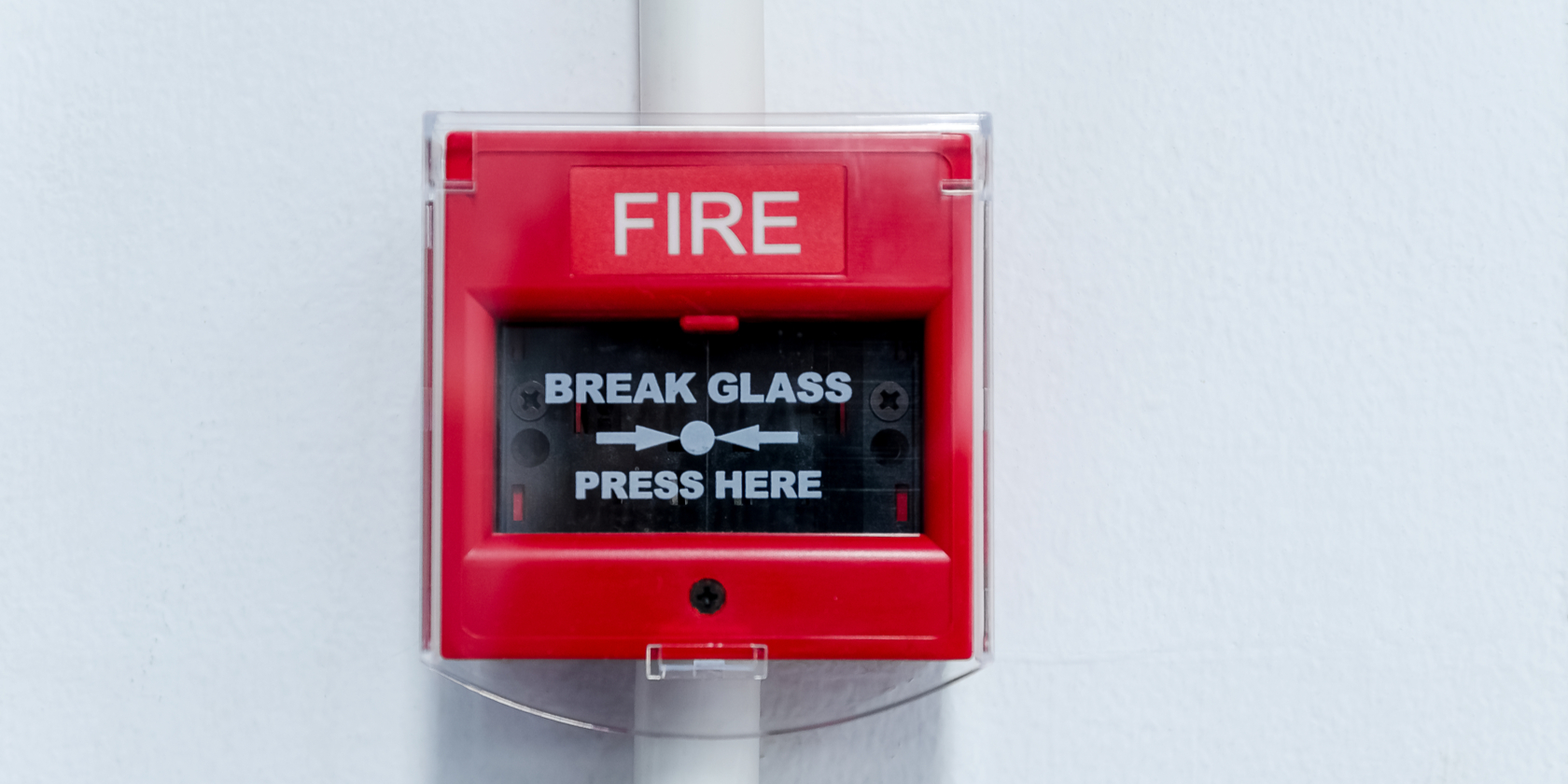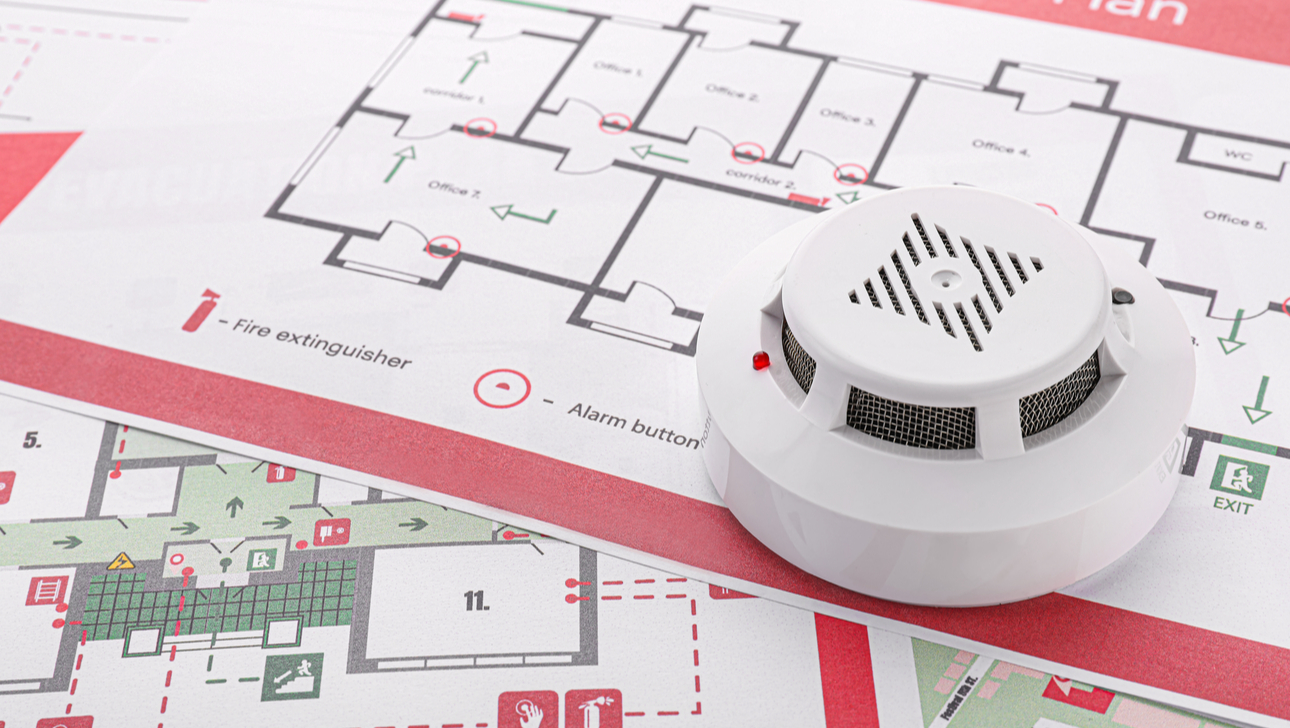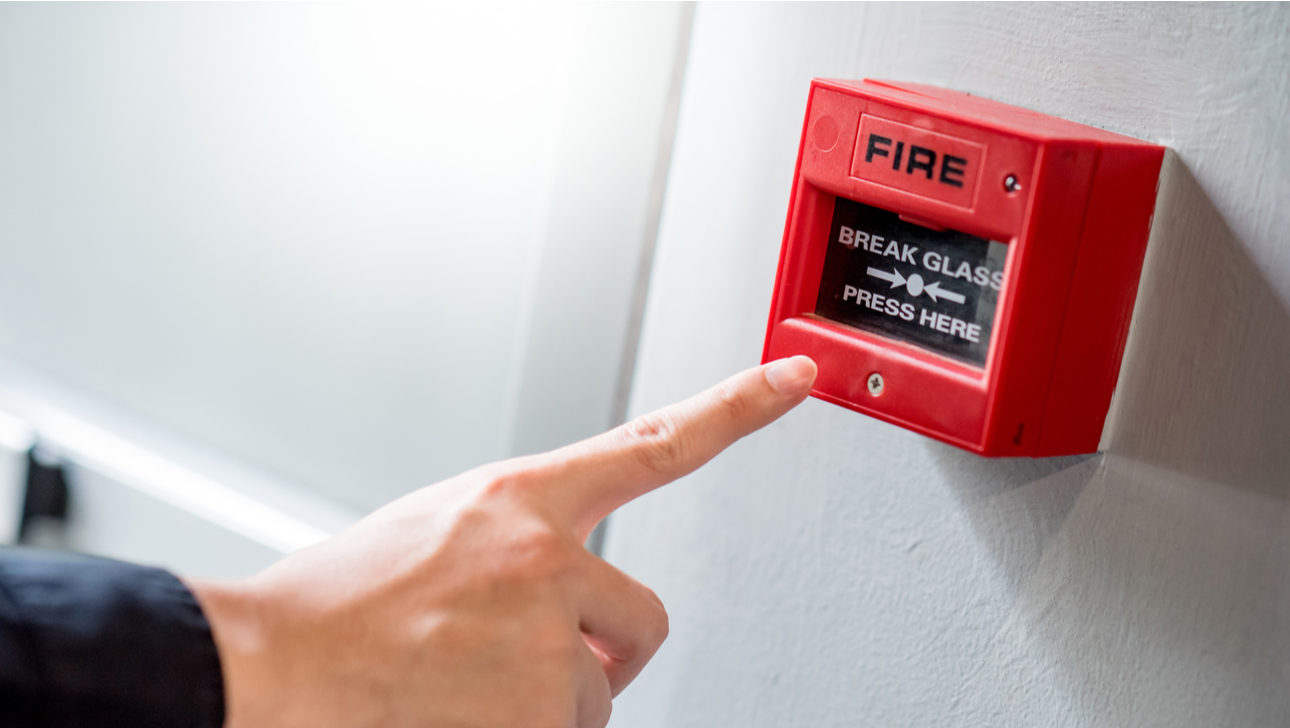Fire Safety: Automatic vs. Manual Fire Alarm Systems

Having the right measures in place for fire safety is not just a consideration for businesses, it is a legal requirement in Ireland. The guidance for fire safety for businesses has changed and businesses are trying to find new ways to stay compliant, protect their people, and operate more efficiently.
Switching to an Automatic Fire Alarm System can help businesses cope with the new challenges that have arisen from changes to how we work, and how we occupy and manage commercial buildings. But what is an Automatic Fire Alarm System and what are the differences between this and a Manual system?
In this article, we’ll provide the essential information and advice you need to keep your property safe and secure against the risks of fire, with an Automatic Fire Alarm System or a Manual Fire Alarm System. We’ll cover:
-
Requirements for fire detection and alarm systems in the Ireland
-
What are Manual category fire alarm systems and how do they work?
-
What are Automatic category fire alarm systems and how do they work?
-
How to improve Fire Safety in your business today

Requirements for fire detection and alarm systems in the Ireland
All businesses in Ireland are responsible by law for the health and welfare of their employees and any visitors to their premises, which includes providing the right fire safety systems, including robust and reliable fire detection systems.
The requirements for fire safety, including detection and alarm systems, are governed by The Fire Services Act 1981-2003 and the Building Regulations 1997-2017. This legislation outlines the need for a thorough fire risk assessment, who is responsible for fire safety on site, and recurring duties required for maintaining and recording fire safety protocols on your site.
When it comes to fire safety equipment, the Irish Standards for the design, installation, and maintenance of fire alarm and detection systems are also vital for business owners. The specific standard that applies is Irish Standard I.S. 3218: 2013 “Fire detection and alarm system for buildings – system design, installations, commissioning, servicing and maintenance”. This standard covers both domestic and commercial fire detection and alarm systems.
What is a Manual category fire alarm system and how do they work?
Manual fire alarm systems are the most basic type. They rely on human activation to alert occupants of a fire. Here's how they work:
- Manual Call Points (MCPs): These are the red break-glass boxes strategically placed throughout the building. When a fire is discovered, someone needs to manually break the glass and press the button inside the MCP.
- Activation: Breaking the glass triggers an electrical signal sent to the fire alarm panel.
- Alarm: The fire alarm panel activates the building's alarm system, sounding sirens or bells throughout the premises.
Pros of Manual Systems:
- Simpler and less expensive to install and maintain compared to automatic systems.
- Fewer false alarms compared to automatic systems.
Cons of Manual Systems:
- Relies on someone detecting the fire and manually activating the alarm. This can be delayed, especially in large buildings or during sleeping hours.
- Not ideal for areas with limited visibility due to smoke or where occupants may not be aware of a fire (e.g., warehouses, basements).
However, what happens to fire safety in an empty commercial building or if occupancy levels change?
The requirement for Automatic Fire Alarm (AFA) is governed by the standard I.S. 3218. Here are some of the key instances where an AFA system is required by law:
- Workplaces: All workplaces must have a suitable fire detection and alarm system. This can range from basic battery-operated smoke alarms to more sophisticated wired-in fire alarm panels with call points and sounders.
- Public Buildings: Buildings that have regular public traffic, such as shopping centers, cinemas, and other public venues, are required to have an AFA system to ensure the safety of occupants
- Residential Buildings: Certain residential buildings, especially those with multiple units or those that provide sleeping accommodation like hotels, hostels, and care homes, must have an AFA system
- Commercial Premises: Commercial buildings, including offices, factories, and warehouses, are required to have an AFA system to provide a safe working environment

What is an Automatic category fire alarm system and how do they work?
Automatic fire alarm systems provide a faster response to fire compared to manual systems. Here's a breakdown of their operation:
- Automatic Fire Detectors: These detectors are placed throughout the building and come in various types, such as smoke detectors, heat detectors, and carbon monoxide detectors.
- Detection: When a detector senses smoke, heat, or carbon monoxide exceeding predetermined thresholds, it sends a signal to the fire alarm panel.
- Alarm: The fire alarm panel activates the building's alarm system, similar to a manual system.
Pros of Automatic Systems:
- Faster detection of fire, especially in unoccupied areas or during sleeping hours.
- Provides earlier warning to occupants, allowing for quicker evacuation.
- Can be integrated with other fire safety measures like building ventilation shutdown or fire door activation.
Cons of Automatic Systems:
- More expensive to install and maintain compared to manual systems.
- Higher chance of false alarms due to environmental factors (dust, steam) or malfunctioning detectors.
How to improve fire safety for your business or commercial premises today
Here are some key steps to improve fire safety in your business:
- Fire Risk Assessment: Conduct a thorough fire risk assessment to identify potential fire hazards and evaluate the risks associated with them. This assessment will help you determine the most appropriate fire alarm system for your premises.
- Choose the Right Fire Alarm System: Based on your fire risk assessment, select a suitable fire alarm system – manual, automatic, or a combination of both. Consider factors like building size, occupancy levels, and potential fire risks.
- Regular Maintenance: Ensure your fire alarm system is serviced and maintained regularly by a qualified professional. This includes testing all detectors, call points, and the fire alarm panel to ensure proper operation.
- Fire Drills: Conduct regular fire drills for your employees. This helps them familiarize themselves with the fire escape plan, location of exits, and proper evacuation procedures.
- Fire Safety Training: Provide fire safety training to all employees. This training should cover topics like fire hazards, using fire extinguishers, and safe evacuation procedures.
- Keep Escape Routes Clear: Always ensure all escape routes and exits are clear of obstructions to allow for a swift and safe evacuation during a fire emergency.
- Review and Update: Regularly review your fire safety procedures and update them as needed. This includes keeping your fire risk assessment current and incorporating any changes in your workplace or fire regulations.
Speak to a Fire Safety expert at Securitas Technology today about equipping your commercial property with the right fire alarm and detection systems. We’ll also be happy to answer any questions or concerns you may have about protecting your property.
By following these steps, you can significantly improve fire safety in your business and ensure the safety of your employees and visitors. Remember, fire safety is a continuous process, not a one-time event. By prioritizing fire safety measures, you can create a safer work environment for everyone.























